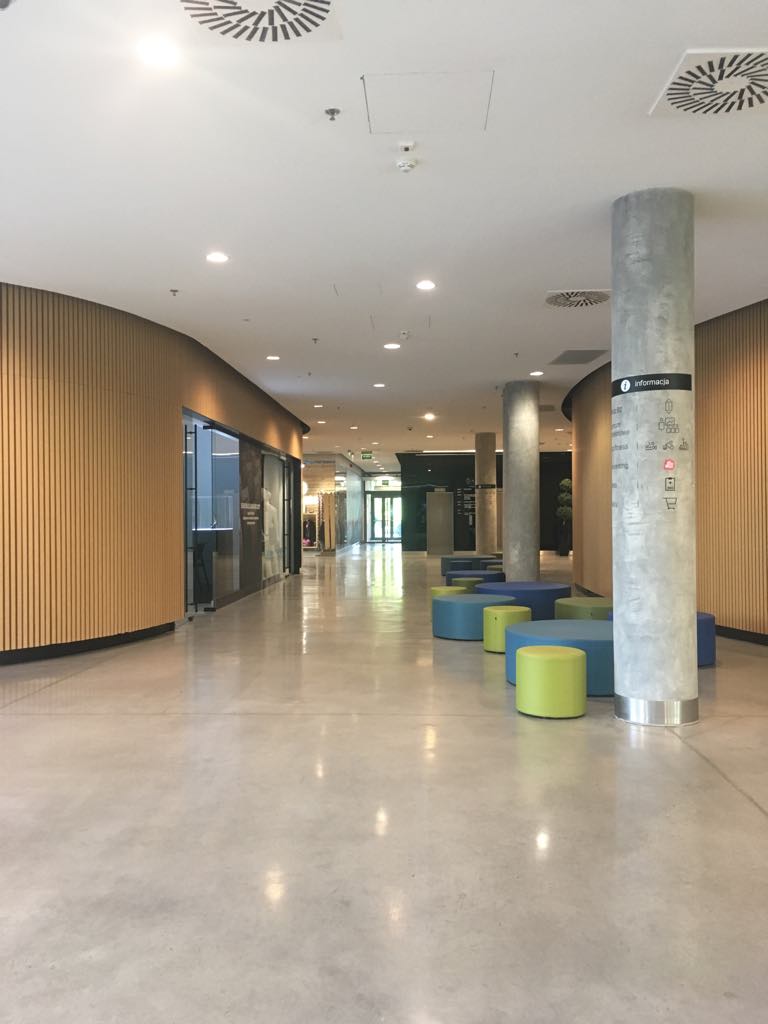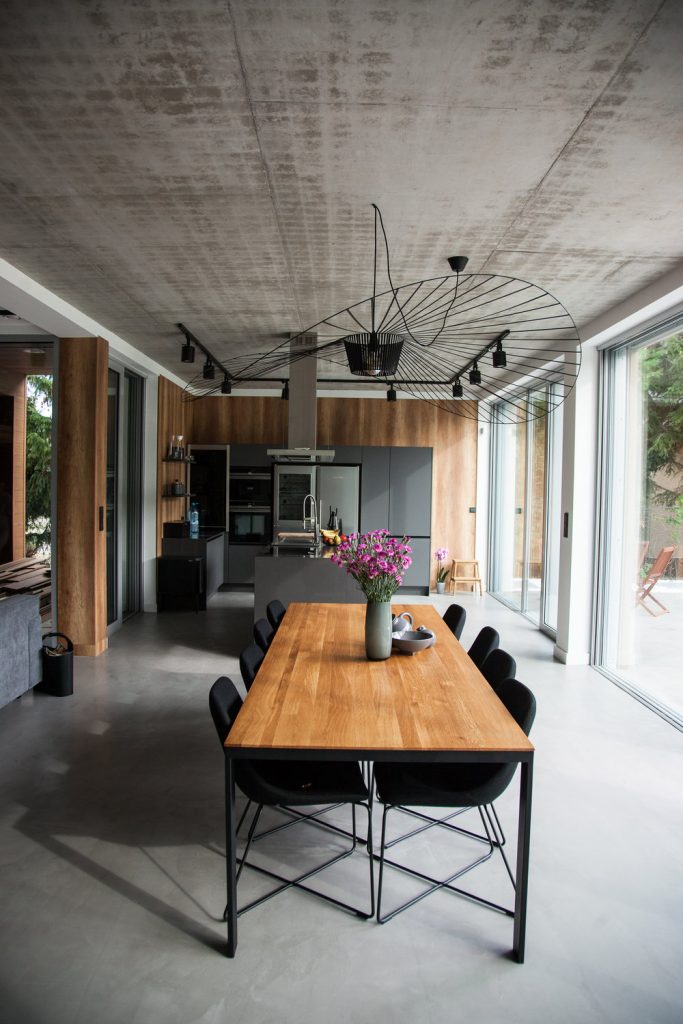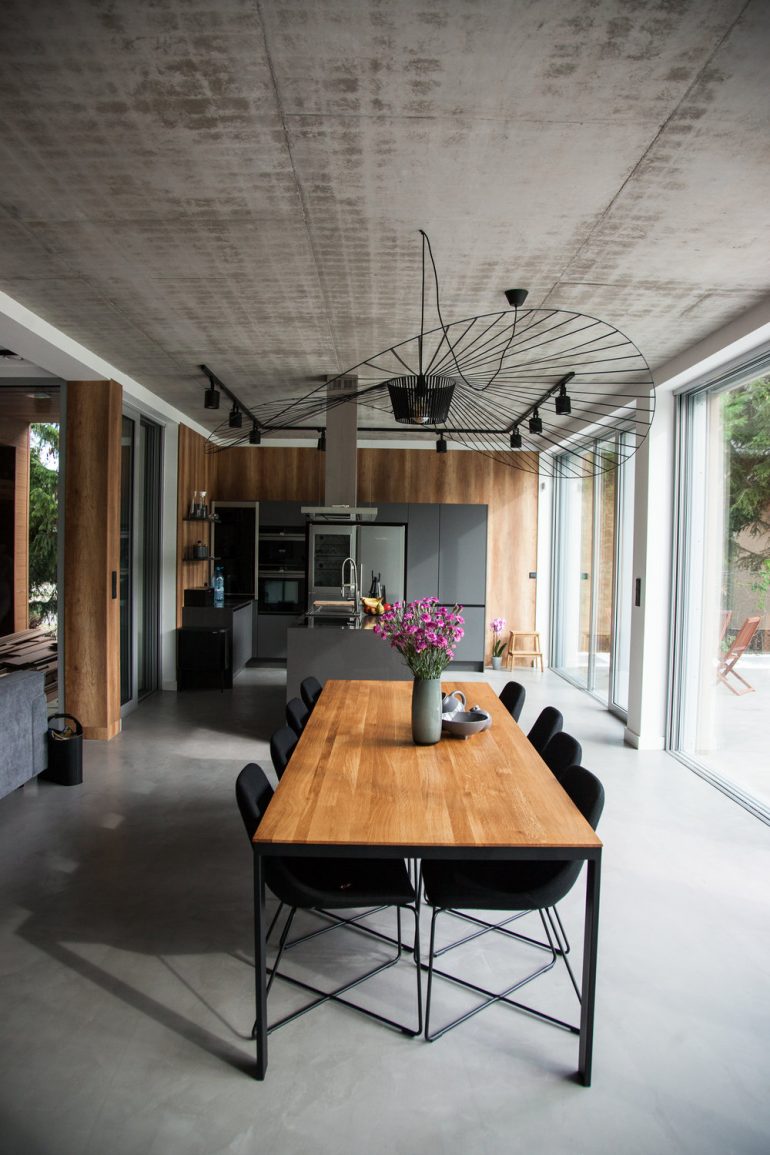If you are at the stage of choosing a floor finish for your interior, you have probably come across two seemingly similar materials: polished concrete and microcement. These two options are gaining popularity, and their unique look is attracting homeowners and interior designers around the world. But are they really the same? Is one of them better than the other? The answer to these questions is not simple. In this article, we’ll look at the differences between these materials to help you make an informed decision.
Microcement vs. polished concrete – what are they?
The first and most important differentiating factor between polished concrete and microcement is their composition. Polished concrete is, as the name suggests, a derivative of concrete. It consists of a mixture of cement, aggregate, water and any additives that may affect its strength, drying speed or color. After mixing and placement, the concrete is polished to produce a smooth, aesthetically pleasing surface.
Microcement, on the other hand, is a unique blend of cement, resins, pigments and various additives that gives it extraordinary flexibility and allows it to be applied to a variety of surfaces, not only floors, but also walls or ceilings.
Polished concrete

Microcement

Key Differences
Although at first glance microcement and polished concrete may appear similar, on closer examination of their properties, one quickly sees significant differences. Durability, ease of cleaning and unique aesthetics are features that undoubtedly characterize both materials. But let’s not be fooled by superficial similarities – despite these shared characteristics, microcement and polished concrete are two completely different materials, each with a unique set of characteristics and applications.
Thickness and texture
The main difference between microcement and polished concrete is the thickness of the final layer. When applied in thin layers, microcement reaches a final thickness of only 2-3 mm. This is a definite advantage, as it allows the product to be easily applied to various surfaces, such as walls or ceilings, without the risk of overloading the structure. The final texture of the microcement is relatively smooth with a fine texture that can be felt under the fingers.
On the other hand, the thickness of the polished concrete layer starts at 8 mm and can reach up to several centimeters. The concrete finish is perfectly smooth, but at the same time slippery, which can be important in rooms where there is a risk of slipping.
Colors
Microcement is the definite leader when it comes to colors. It offers a wide range of colors, from muted grays and beiges to vibrant, bold colors. Such variety allows it to match almost any interior style.
Polished concrete, as a rule, comes in a limited color palette. Most often these are various shades of gray, although you can also find white or beige concrete.
Application method
The two materials are also different when it comes to their application methods. The microcement is applied by hand and then sanded with light grinders. This means the work can be done by less experienced renovation crews, without the need for heavy equipment.
Polished concrete, on the other hand, requires on-site molding using traditional concrete methods. The concrete is trowelled with heavy industrial trowels and then ground with advanced concrete grinders.
Price and place of application
Price and place of application are other differences between these two materials. Polished concrete is more commonly used for large areas, such as production halls and warehouses. This is due to the need for specialized heavy equipment and experience, which drives up costs.
Microcement, on the other hand, is more versatile – it is suitable not only for floors, but also for walls or ceilings. It can be used in both large and small areas, making it ideal for apartments or houses. In addition, there are special, easy-to-use microcement systems that favor self-application, while reducing costs.
Style and aesthetics
Both microcement and polished concrete fit perfectly into industrial and minimalist styles. Microcement offers more customization options with its variety of colors and textures, while polished concrete impresses with its high gloss, revealing the natural texture of concrete.
Summary
The choice between microcement and polished concrete should depend on the specifics of the project, individual preferences, budget, and expected durability. Both materials offer exceptional aesthetics and functionality, but differ in key aspects such as thickness, texture, price, and application method. Understanding these differences will help you make an informed decision that best suits the needs of your project.
Find out more: https://www.festfloor.com/microcement/





